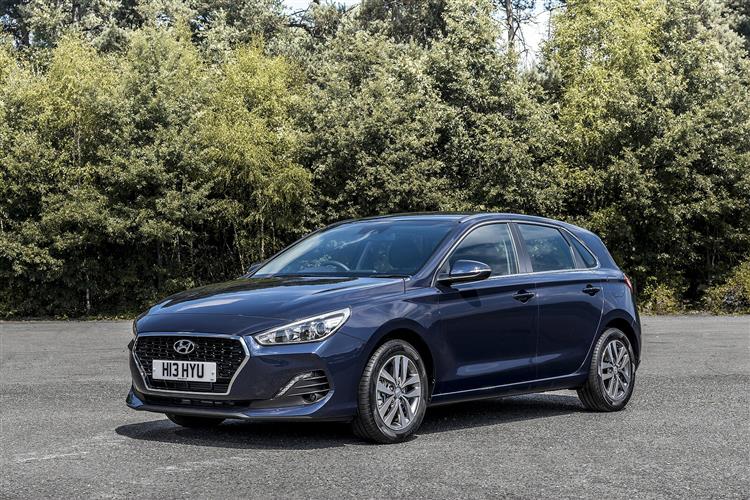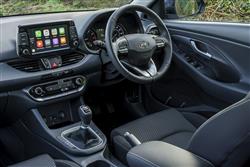ISSUES WHEN TURNING THIRTY (some text hidden) SECTIONED_new_hyundaii30_2017
By Jonathan Crouch
Introductionword count: 62
From its launch in 2017, Hyundai's much improved third generation i30 delivered smarter looks, a wider variety of body styles, efficient engines and stronger standards of safety and media connectivity. So if you're shopping in the family hatchback segment for a model made in the 2017-2020 period, it's a product that certainly adds up on paper. But then, the i30 always has.
Modelsword count: 14
5dr hatchback/ Tourer estate (1.0, 1.4, 2.0 turbo petrol / 1.6 CRDi diesel 110PS)
Historyword count: 321
Cast your mind back to 2007. That was the year the very first Hyundai i30 family hatchback appeared, a Focus-sized model that completely changed the way we thought about Korean cars. Since then, this Asian maker has transformed itself from being a budget brand to the point where it's now a mainstream quality choice, that process aided by the launch of this third generation i30 model in early 2017. This was, according to its maker, 'a car for everyone'. Except that it wasn't. It couldn't be, Hyundai's product range by 2017 being tailored much more specifically for individual needs. That's why in this period, the same kind of money that most i30 models sold for would alternatively buy you the company's Kona SUV. Or, for those more concerned about saving the planet than conquering parts of it, there was the brand's eco-minded IONIQ hybrid. All of which left this i30 free to focus a little - in every sense. Ford's market leader was one of the family hatchbacks the Korean brand had in its sights with this car, but there were plenty of others, with Vauxhall's Astra, Peugeot's 308 and of course Volkswagen's Golf all representing key targets. Take on that lot and you'd better come well prepared: fortunately, Hyundai did. In MK3 model form, the i30 was stiffer, slightly bigger and a lot smarter. The petrol engines were all of the new-tech T-GDI variety and the driving experience was supposedly improved by changes to the steering and the damping. There were vastly-improved levels of camera-driven electronic safety and media connectivity. And buyers of this fourth generation car got the choice of four different variants, so as well as this five-door hatch and its 'Tourer' estate counterpart, there was also a style-orientated five-door 'Fastback Coupe' and the high performance i30 N hot hatch. This MK3 model sold until 2020, when it was replaced by a facelifted model with mild hybrid tech.
What You Getword count: 277
When Hyundai developed their very first i30 model back in 2007, exterior design wasn't really top of the priority list. Five years later though, at the launch of that design's second generation replacement, we noted that the brand had put far more work into styling and packaging, an emphasis that's paid off since, with customers apparently rating this car's pleasing design as their number one reason for purchase. Hence all the effort put into the look of this MK3 model, which adopted a sharper, sleeker, leaner look than before. As one writer put it, 'it's now more Prada than Primark'. Behind the wheel, your first impression will probably that quality has gone up a notch or two. The biggest cabin talking point is the 8-inch colour touchscreen, though bear in mind that you'll only get it if you can avoid the two lower-spec trim levels. This is your interface for controlling satellite navigation, the DAB audio set-up and a package of 'TomTom LIVE' services that alert you to speed cameras, update you on the weather and provide accurate information on traffic jams and roadworks. You can also connect in your handset using the 'Apple CarPlay' and 'Android Auto' smartphone mirroring systems. On the back seat, as with most other cars in this segment, it's not possible to sit three fully-sized adults with any real degree of comfort but if there are only two of you, then you'll find that there's reasonable space for legs, knees and shoulders. The 395-litre cargo capacity is class-competitive. If you need more space and want to push the rear backrest down, there's up to 1301-litres of carrying capacity available in this configuration.
To see the full road test text contact us on 0330 0020 227
Pictures (high res disabled)

.jpg)
|
.jpg)
|
.jpg)
| |||
.jpg)
|
.jpg)
|
.jpg)
| |||
.jpg)
|
.jpg)
|

|
Scoring (subset of scores)
Category: Spacious Family Cars
| Performance | |
| Handling | |
| Comfort | |
| Space | |
| Styling, Build, Value, Equipment, Depreciation, Handling, Insurance and Total scores are available with our full data feed. | |



